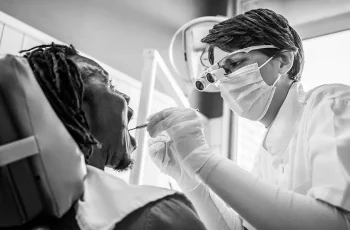Vaginal yeast infection, or vaginal candidiasis, is a widespread condition affecting about 75% of women at some point. While not a sexually transmitted disease, sexual activity can heighten the risk. It occurs when the natural balance of bacteria and fungi in the vagina is disrupted, allowing the fungus Candida albicans to overgrow. If untreated, it may lead to complications, including chronic discomfort or systemic infections. Symptoms include intense itching, irritation, burning, vulvar swelling, redness, pain, soreness, rash, and abnormal vaginal discharge (often thick and white). Home remedies, alongside conventional treatments, can help restore the vaginal microbiome and eliminate infectious fungi.

Causes and Risk Factors
The primary cause of vaginal yeast infections is an overgrowth of Candida albicans, normally kept in check by beneficial bacteria like Lactobacilli. Factors disrupting this balance include excessive antibiotic use (which kills protective bacteria), chronic diabetes, weakened immunity (e.g., HIV), hormone therapy, oral contraceptives, and pregnancy-related hormonal changes. These conditions reduce Lactobacilli or promote yeast proliferation, creating an environment conducive to infection. Understanding these triggers is key to prevention and effective management.
Natural Remedies for Vaginal Yeast Infections
- Yogurt (Probiotics)
Plain, unsweetened Greek yogurt is rich in Lactobacillus acidophilus, a probiotic that restores the vaginal microbiome and inhibits yeast growth. Consume daily or apply topically to the vulva. For vaginal use, insert yogurt using a tampon. Avoid flavored or sweetened yogurt, as additives may exacerbate yeast growth. - Oregano Oil
Wild oregano (Origanum vulgare) oil has potent antifungal properties. Dilute 3-5 drops per ounce of carrier oil (olive or sweet almond) for topical application near the vagina; avoid insertion or ingestion. Consistent use may reduce Candida overgrowth effectively. - Coconut Oil
Organic coconut oil’s antifungal properties target Candida albicans. Apply pure coconut oil topically to vaginal skin daily until symptoms subside. Ensure it’s free of additives to prevent irritation and maximize efficacy. - Garlic
Garlic exhibits antifungal effects against certain Candida strains. Increase dietary intake through meals to support overall health. Avoid vaginal application (e.g., suppositories), as it risks severe irritation, burning, itching, or redness. - Tea Tree Oil
Tea tree oil’s broad antimicrobial properties combat fungi, bacteria, and viruses. Dilute significantly with a carrier oil (coconut or almond) for topical use near the vagina; avoid insertion. Tea tree oil suppositories are safer alternatives. Perform a patch test to prevent irritation, especially on sensitive skin, and avoid oral use. - Boric Acid Suppositories
Boric acid vaginal suppositories act as an antiseptic, eliminating yeast when used with medications. However, boric acid is toxic in excess, potentially causing kidney or heart damage. Topical use may cause irritation or itching. Avoid during pregnancy, on broken skin, or without a patch test. - Apple Cider Vinegar (ACV) Bath
ACV’s acidity helps combat fungal growth. Add half a cup to lukewarm bathwater and soak for 15-20 minutes daily. Unlike douching, which removes beneficial bacteria and is discouraged, ACV baths support vaginal pH balance without disrupting the microbiome. - Vitamin C
Boosting Vitamin C intake through citrus fruits, berries, or supplements strengthens immunity, aiding the body in fighting yeast infections. Regular consumption complements other remedies for holistic management. - Vitamin E
Vitamin E’s anti-inflammatory properties reduce vaginal inflammation and discomfort. Apply Vitamin E oil or suppositories vaginally to soothe symptoms. Topical use is safe and effective for symptom relief. - Lemongrass Oil
Lemongrass oil disrupts Candida biofilm, inhibiting fungal growth. Dilute with a carrier oil for topical skin application; avoid insertion. Lemongrass capsules for topical use are also available, offering a convenient option.
Prevention and Vaginal Health Tips
Preventing vaginal yeast infections requires maintaining a healthy vaginal microbiome. Key practices include:
- Wearing loose, breathable cotton underwear and changing daily.
- Avoiding tight, synthetic clothing that traps moisture.
- Steering clear of scented soaps, douches, or chemical-laden feminine products.
- Keeping the vaginal area dry and avoiding prolonged wear of wet clothes (e.g., swimsuits).
- Managing blood sugar levels, especially for diabetic individuals, to reduce yeast-friendly environments.
These habits minimize risk factors and support long-term vaginal health, reducing the likelihood of recurrent infections.

Conclusion and Precautions
Home remedies like yogurt, oregano oil, coconut oil, garlic, tea tree oil, boric acid, ACV baths, Vitamin C, Vitamin E, and lemongrass oil aim to restore microbial balance, inhibit Candida overgrowth, and alleviate symptoms. However, caution is critical when applying remedies to sensitive vaginal areas. Boric acid is toxic in excess and unsafe during pregnancy, while improper use of oils (undiluted or inserted) may cause irritation. If symptoms persist, worsen, or become severe, seek professional medical attention for accurate diagnosis and treatment. Combining natural remedies with proper hygiene and medical guidance ensures effective management and prevention of vaginal yeast infections.



